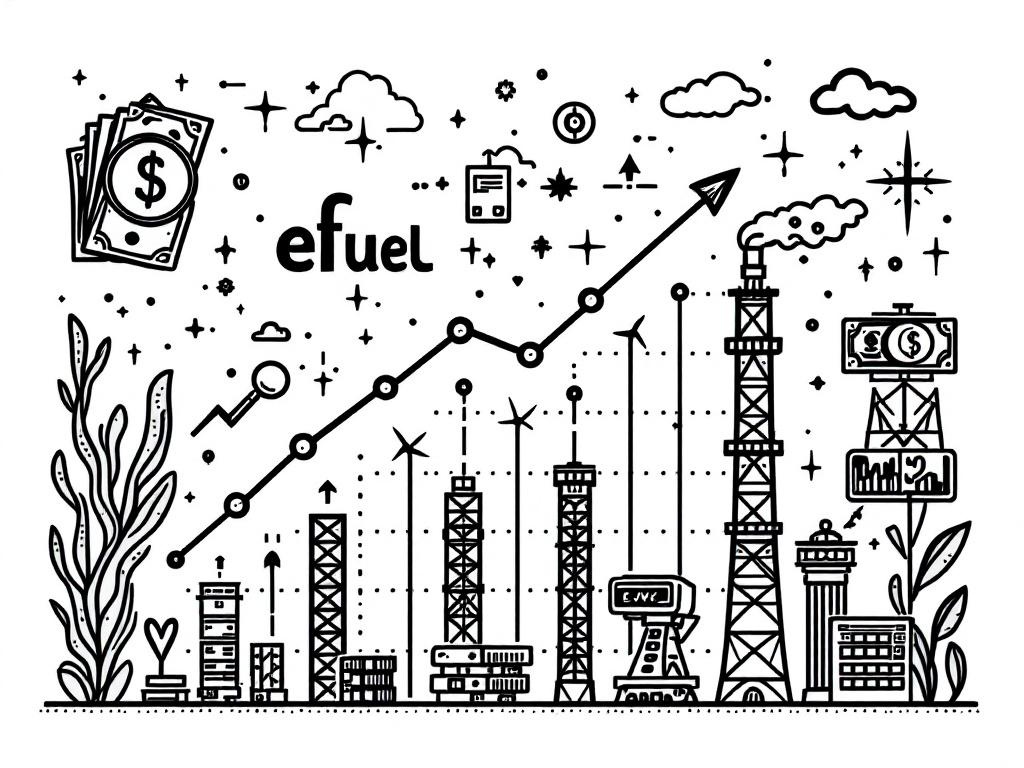E-Fuel Market Set for Explosive Growth by 2032

Global, Wednesday, 6 August 2025.
The e-fuel market is projected to grow from USD 8.89 billion in 2024 to USD 215.51 billion by 2032, driven by sustainable energy demand and technological advancements.
Explosive Growth Projections
The e-fuel market is estimated to expand dramatically from USD 8.89 billion in 2024 to USD 215.51 billion by 2032, representing an impressive Compound Annual Growth Rate (CAGR) of 48.96% over this period [1]. This rapid growth is attributed to increasing demand for sustainable energy solutions and advancements in technology fueling these markets [1][3][4].
Technological Drivers and Regulatory Support
Key technological advancements such as hydrogen production, carbon capture, and Power-to-Liquid processes are pivotal in reducing e-fuel production costs, making these fuels a viable alternative to traditional fossil fuels. Furthermore, government regulations, including net-zero emissions targets and incentives for clean fuel production, are bolstering market adoption [2][3]. Regulatory frameworks, particularly in regions like the European Union and the United States, support this transition through incentives and mandates for cleaner energy solutions [6][7].
Global Market Dynamics
The market landscape is predominantly led by North America, followed by Europe and the rapidly growing Asia-Pacific region. Asia-Pacific’s swift expansion is largely driven by industrialization, energy demand, and significant investments in green hydrogen and renewable energy infrastructure [1][3]. Countries like Japan, South Korea, India, and Australia are at the forefront of these developments, enhancing their decarbonization strategies [5][7].
Impact on the Broader Economy
The burgeoning e-fuel market is expected to play a crucial role in the global transition towards a sustainable energy economy, contributing significantly to emission reductions in sectors where electrification is challenging, such as aviation, shipping, and heavy transport [2][4]. As the market expands, the economic impact will likely include job creation in these new energy sectors and infrastructure development, providing a backbone for future sustainable growth [1][5].
Sources
- www.einpresswire.com
- www.marketsandmarkets.com
- www.prnewswire.com
- www.einpresswire.com
- investorshangout.com
- www.leadventgrp.com
- www.news.market.us